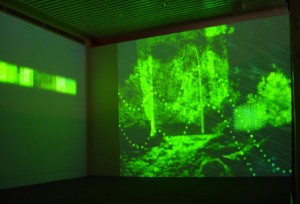LOGIN was a series of residencies for emerging visual artists to develop web-based projects.

Anna Kocsis_Neonverte 1998
In 1998, the pilot year of the project involved four residencies for Australian artists, run in partnership with members of the Contemporary Art Organisations (CAOs) network. 200 Gertrude Street (Melbourne), 24 Hour Art (Darwin), Canberra Contemporary Art Space and Boomalli (Sydney) hosted the physical component of the residencies.
The LOGIN: residencies provided the participating artists with access computers and the internet, as well as the critical and cultural context of the host arts organisations. The artists also had access to server space, some technical support and the support of an online community. The online environment is currently a site of some of the most politically challenging and aesthetically innovative art projects. It’s a context where traditional artforms meld and mutate, and where traditional notions of authorship, exhibition and publishing dissolve into and out of each other.
Three of the residencies established under this program (established as a component of the Visual Arts/Craft Fund’s emerging artists initiative) were completed during 1999.
Lisa Beilby + 24 Hr Art
Lisa Beilby, a new media artist who works with photographic media and the internet, completed her residency with 24 Hr Art in Darwin in January 1999. Lisa created a work entitled thing, a constantly evolving reactive multimedia virtual space, thing prods, cajoles and quizzes the interactor/s into a meandering network of shifting pathways made of lush and challenging sound, visuals and intellectual / psychological adventures.
Beilby describes the website as ‘something which exploits the more insidious aspects of human nature and human psyche with and without the Interactor/s consent‘.
http://login.anat.org.au/anat-lisa/index.html
Anita Kocsis + 200 Gertrude Street
For her residency, Anita Kocsis, an artist who works in installation and painting within a digital context, began an adjunct to an architectural model of her mind processes, called Photonpsycho (a visual protoplasm). Her residency project was undertaken in collaboration with Melbourne organisation, 200 Gertrude Street. Her project, Neonverte, is a web based installation, built as a Garden. The installation component of the project featured elements from the site as well as a VRML glide-through of areas of Neonverte.
She wrote of the project, “My main methodology has to do with an interest in a multidimensional transformative practice rather than adhering to the transcriptive language the web provides. These ideas also intersect within the constructs of the net-collaborations. The outcome is continual.”
Dysfunctional, unpredictable and rapidly growing, the internet is drawn into the funnelweb of Kocsis’ garden site. As Anita stated: ‘to climb to the top of a tree is no easy task. The kids in Enid Blytons ‘Folk of the Faraway Tree’ knew it. They had to contend with interruptions. Yet they still climbed to see what new land had arrived. As far as I can recall some of the lands were shockers, like the ‘land of smacks’. The minute they got there they wanted to get out. Yet it was never so easy.’
http://www.neonverte.com/
http://login.anat.org.au/anat_anita/neonverte/index.html
Michael Barac + Canberra Contemporary Art Space
Michael Barac is an artist and programmer who has used digital media technologies to create works for web, video and photographic environments. His residency was undertaken in collaboration with Canberra Contemporary Art Space, during which Barac explored contemporary political debates regarding Australia’s constitution, focusing the pragmatic
representation of Australia as a Republic. He focused particularly on the icon of the flag, constructing an alternative flag forum, where internet users can partake in the creation of a flag that evolves with time.
His aim was that once audience members have created their flag they can submit it via a form button in Netscape and it is automatically added to a web page. He says, ‘It’s my hope to monitor votes from visitors to the site and have a program generate a flag in a quasi-democratic way. Either votes are collected or you add the details of the flag that you made to a grand pool of details where the most popular characteristics generate a collective flag.’
Web participants may determine each mutation of the ever metamorphosing flag, by voting, or intermingling different designs. He says of the project, “I would like people to participate and have fun in some way. It would be an opportunity for people to feel involved…creating more discussion, particularly about what it means to be Australian“.
The intention of LOGIN: was to provide emerging artists with an opportunity to explore, experiment and participate in the connectivity of the internet. Artists were given opportunities to develop new skills and create new works, which may encompass web-based interactive artworks, virtual environments, web-tv programs, web-based software or artificial life projects, CUSeeMe and Real Audio performances.
http://login.anat.org.au/
Please note this is a historic site – some links may no longer work
Tags: emerging visual artists, multimedia virtual space, new media, Residencies




